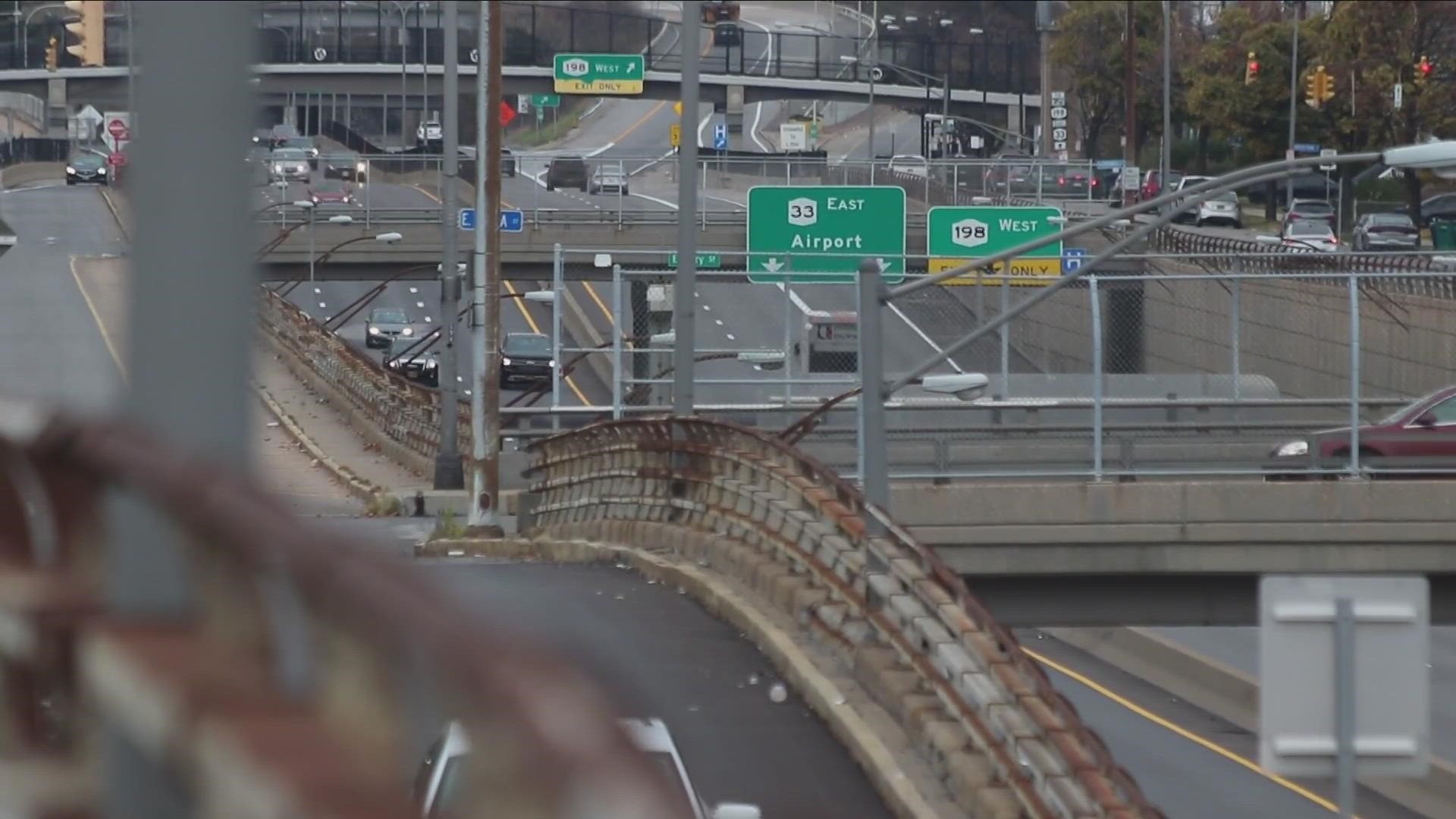BUFFALO, N.Y. — The ongoing effort to put a cover over the Kensington Expressway in Buffalo was energized Friday with the news that the federal government has decided to use $55 million from the Infrastructure Investment and Jobs Act for that project.
2 On Your Side spoke with an engineering expert about the major construction work that could be involved.
University at Buffalo School of Engineering associate professor and civil engineer Dr. Anthony Tessari said, "Going below ground is always ... an involved process, and there's a lot more to it than maybe people think."
Tessari has a first hand understanding. He worked as a land surveyor with parkland on the covered portion from Boston's Big Dig project, which took the central artery Interstate 93 highway into a downtown tunnel. It was planned to reconnect neighborhoods, just as the Kensington project is supposed to do for those in Buffalo separated by the 1950s-era construction.
Tessari says it has been done elsewhere in Seattle, Dallas, and some European cities as well.
"We've seen with other cities and other similar projects that they've chosen to put parks on top, and that has added to the beauty and aesthetic of the project. It draws people in. It brings things together," Tessari said.
But it's not cheap or easy. The state has already committed another $1 billion in taxpayer money for the five to 10-year project. The latest plan calls for a 4,600-foot tunnel, ventilated for vehicle exhaust, from Dodge to Sidney streets near MLK Park.
Tessari points out it will require specialized planning, equipment, construction techniques, and labor.
"We kind of already have this trench in the ground. It's not quite deep enough in many sections, so you almost have to go in there, cut that down a little bit more, and then you're going to cover back up and make the structure. But there's a bit more uniqueness," Tessari said.
He added: "How do you redirect that traffic for this construction to take place? How do you deal with construction issues affecting a local community? So even though it's temporary, you have to take into account you're going to be disrupting the local community for a period of time."
And one final element from the UB professor who says "seeing firsthand the benefit of relinking two parts of Boston with the Big Dig, there were the intangible parts of that, which went well beyond just what we saw in terms of a dollar cost."
On the other hand, the Big Dig first estimated to cost $2.6 billion swelled to $14.8 billion with major cost overruns and other issues when finished in 2007, according to NBC News.
There were support structure failures and even a fatal roof collapse on a car in one location of the project, which was actually near the Boston Harbor. Others say it did improve traffic flow and spurred economic development in Boston.
We'll see the impact in Buffalo which again would be a much, much smaller project.

